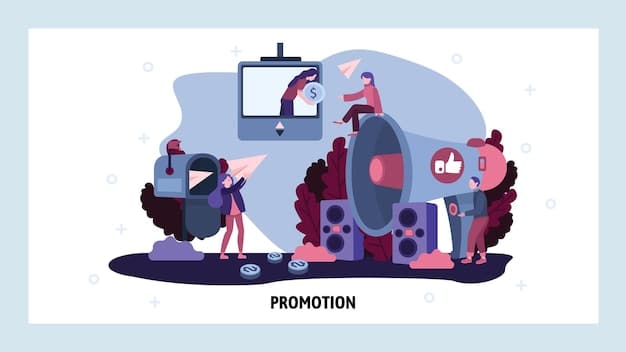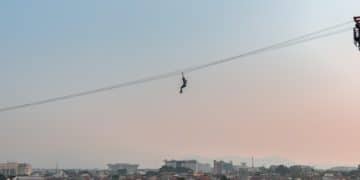Special Effects Cost Increase: Threat to Independent Filmmakers?

The escalating costs of special effects, particularly the recent 15% increase, pose a significant threat to independent US filmmakers, potentially limiting their ability to compete with larger studios and tell ambitious stories.
Are rising special effects costs pricing independent US filmmakers out of the market? The recent 15% surge is raising serious concerns about the future of indie cinema. Let’s delve into the issue.
The Rising Tide of Special Effects Costs
The world of filmmaking is constantly evolving, with technological advancements pushing the boundaries of what’s possible on screen. However, this progress comes at a cost. Special effects (VFX) have become an integral part of modern cinema, but their rising expenses are creating significant challenges, especially for independent US filmmakers.
The recent 15% increase in VFX costs is not merely a slight adjustment; it’s a wave that could potentially engulf the dreams of many independent creators. This rise impacts every stage of production, from pre-visualization to post-production compositing, making it harder for smaller studios to compete.
The Impact on Smaller Studios
Independent filmmakers often operate on tight budgets, relying on creativity and resourcefulness to bring their visions to life. Increased VFX costs can force them to make difficult choices, potentially compromising the quality or scope of their projects.
- Limited Project Scope: Higher costs may force filmmakers to scale back ambitious scenes or reduce the overall complexity of their stories.
- Compromised Quality: To stay within budget, filmmakers might opt for cheaper, lower-quality effects, which can detract from the film’s overall impact.
- Delayed or Cancelled Projects: In some cases, the increased financial burden could lead to delays or even the cancellation of promising independent films.

Ultimately, the rising cost of special effects threatens the diversity and vibrancy of the independent film scene, potentially limiting the types of stories that can be told and the voices that can be heard.
Why Are Special Effects Costs Increasing?
Several factors contribute to the increasing cost of special effects. Understanding these reasons can shed light on the challenges faced by independent filmmakers. It’s not just one single element that is driving up prices, but rather a confluence of trends and market forces.
From the complexity of modern VFX to the increased demand for skilled artists, the pressures on VFX budgets are multi-faceted and require careful consideration by studios of all sizes.
- Increased Complexity: Modern audiences expect increasingly sophisticated and realistic visual effects, requiring more time, effort, and expertise to create.
- Demand for Skilled Artists: The demand for talented VFX artists is high, driving up salaries and labor costs.
- Software and Technology Expenses: Specialized software and hardware required for VFX are often expensive, adding to the overall cost.
The Role of Technology
Advances in technology, while enabling groundbreaking visual effects, also come with a price tag. The latest software and rendering techniques require significant investment, contributing to the escalating costs. Moreover, the learning curve associated with these technologies adds to the expense, as artists need training and time to master them.
The reliance on complex software and hardware, coupled with the need for continuous upgrades and maintenance, places a significant financial burden on VFX studios and, by extension, on the filmmakers who rely on them.
The Competitive Landscape: Indie vs. Studio Films
Independent filmmakers already face an uphill battle competing with major studios, which have far greater resources at their disposal. The rising cost of special effects exacerbates this disparity, making it even harder for indie films to attract audiences.
While studio films can absorb the increased costs of VFX, independent films often struggle to secure funding and may be forced to compromise on quality or scope.
Leveling the Playing Field
The challenge for independent filmmakers is to find ways to compete with studio films without sacrificing their artistic vision or breaking the bank.
- Creative Solutions: Indie filmmakers can explore innovative techniques and alternative approaches to VFX that are both effective and budget-friendly.
- Collaboration and Resource Sharing: Pooling resources and sharing expertise with other independent filmmakers can help reduce costs.
- Government Support and Funding: Increased government support and funding opportunities specifically targeted at independent films can help alleviate the financial burden.

The future of independent cinema depends on finding sustainable solutions to the challenges posed by rising special effects costs. The industry needs to adapt and support the creativity and ingenuity of independent filmmakers to ensure that diverse voices and stories continue to thrive.
Strategies for Independent Filmmakers to Manage VFX Costs
Despite the challenges, independent filmmakers can employ various strategies to manage special effects costs effectively. These strategies require careful planning, resourcefulness, and a willingness to explore alternative approaches.
From pre-production planning to post-production execution, there are numerous ways for independent filmmakers to control VFX costs without compromising their artistic vision.
Pre-Production Planning
Careful planning and preparation during pre-production can significantly impact VFX costs. By thoroughly visualizing the effects and creating detailed storyboards, filmmakers can minimize costly surprises later on.
Effective pre-production planning involves:
- Detailed Storyboarding: Creating detailed storyboards to visualize the effects and plan shots effectively.
- Pre-Visualization: Using pre-visualization techniques to experiment with different approaches and identify potential cost savings.
- Budget Allocation: Allocating sufficient budget for VFX and carefully tracking expenses throughout the production process.
Exploring Alternative VFX Techniques
Independent filmmakers can also explore alternative VFX techniques that are more budget-friendly than traditional methods. These techniques often require creativity and ingenuity, but they can deliver impressive results without breaking the bank.
Some alternative VFX techniques include:
- Practical Effects: Using practical effects, such as physical props, miniatures, and makeup, can be a cost-effective alternative to CGI.
- In-Camera Effects: Mastering in-camera effects, such as forced perspective and lighting tricks, can create visually stunning moments without extensive post-production work.
- Stock Footage and Assets: Leveraging stock footage and pre-made assets can save time and money on creating VFX from scratch.
Post-Production Efficiency
Optimizing the post-production workflow can also help reduce VFX costs. By streamlining the process and using efficient software tools, filmmakers can minimize the time and resources required to complete the effects.
Efficiency in post-production involves:
- Streamlined Workflow: Establishing a clear and efficient workflow to minimize bottlenecks and delays.
- Software Optimization: Using optimized software tools and rendering techniques to reduce processing time and costs.
- Collaboration and Communication: Fostering open communication and collaboration between the VFX team and other departments to ensure a smooth and efficient process.
By embracing these strategies, independent filmmakers can navigate the challenges of rising special effects costs and continue to create compelling and visually stunning films.
| Key Point | Brief Description |
|---|---|
| 📈 Rising VFX Costs | 15% increase threatens independent US filmmakers. |
| 💡 Managing Costs | Strategic planning and alternative techniques crucial. |
| 🎬 Indie Innovation | Creativity needed to compete with studio films. |
| 🤝 Collaboration | Resource sharing and support can reduce strains. |
FAQ
▼
VFX costs are rising due to increased complexity, demand for skilled artists, and expensive software, impacting independent filmmakers’ budgets significantly.
▼
Higher VFX expenses can limit indie films’ scope, compromise visual quality, and even lead to project cancellations, hindering their growth.
▼
Practical effects, in-camera tricks, stock footage, and efficient post-production workflows are budget-friendly solutions for independent filmmakers.
▼
Detailed storyboards, pre-visualization, and careful budget allocation during pre-production can minimize unexpected VFX costs later on.
▼
Streamlining workflows, using optimized software, and fostering clear communication can efficiently reduce VFX costs during post-production efforts.
Conclusion
In conclusion, the 15% increase in special effects costs presents a formidable challenge to independent US filmmakers, potentially stifling creativity and limiting the scope of their projects. However, by embracing innovative techniques, strategic planning, and collaborative efforts, these filmmakers can continue to bring their unique visions to the screen and thrive in an ever-evolving industry.
![Special Effects Secrets: Making [Movie Title] Magic for Under $50K Special Effects Secrets: Making [Movie Title] Magic for Under $50K - Cover Image](https://endingnew.com/wp-content/uploads/2025/06/endingnew.com_13_1749558769_a0223f59_cover-360x180.jpg)




